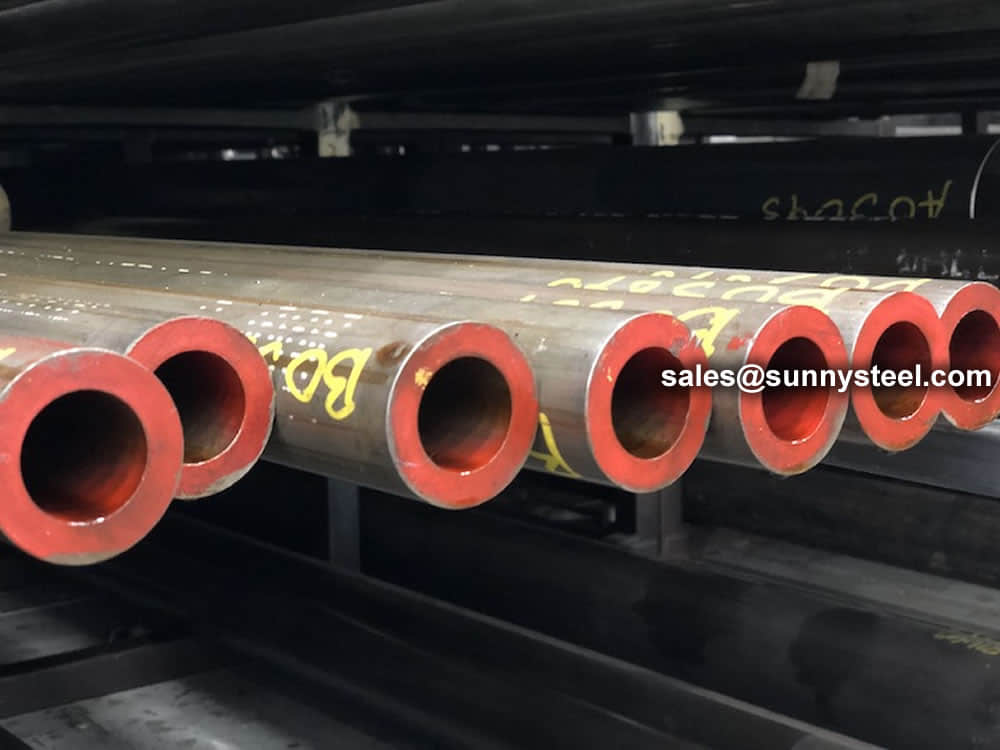Bearing Pipes
Pipes designed for bearing loads, offering high strength and durability.

Cold drawn cylinder pipes are precision pipes that have been manufactured through a cold drawing process.
This method involves pulling a hollow tube through a die to reduce its diameter and wall thickness, which results in improved mechanical properties and surface finish. These pipes are widely used in various industries due to their high strength, precision, and excellent surface quality.
Cold drawn cylinder pipes are manufactured by pulling a solid cylindrical bar through a die to reduce its diameter and achieve the desired dimensions.
Cold drawn cylinder pipes, also known as cold drawn seamless steel tubes, are manufactured through a cold drawing process. This type of pipe has precise dimensions, high surface finish, and excellent mechanical properties. Cold drawn seamless steel tubes are typically made from high-quality carbon structural steel and, in addition to ensuring chemical composition and mechanical properties, must undergo hydrostatic testing, edge flaring, expansion, and flattening tests to ensure their performance.
The manufacturing process of cold drawn seamless steel tubes includes the following key steps:
The chemical composition of cold drawn seamless steel tubes is a key factor in determining their performance. Different grades of steel have different chemical compositions to meet various application requirements.
Quality control is an essential part of ensuring that the product meets industrial standards. This includes checks for surface conditions, such as rust, cracks, dents, and scratches.
Heat treatment is an important step in improving the properties of materials. Annealing and normalization are common heat treatment processes for cold drawn seamless steel tubes.
Environmental production is an important consideration in the manufacturing process of cold drawn seamless steel tubes. Measures are taken to reduce the environmental impact of production.
The specifications of cold drawn seamless steel tubes are defined by their outside diameter (OD) and wall thickness (WT). According to ANSI B36.10 standards, the range of outside diameters for cold drawn seamless steel tubes ranges from 1/8 inch (6 mm) to 42 inches (1067 mm), and the wall thickness varies depending on the schedule.
| Steel Grade | Tensile (MPa) |
Yield (MPa) |
Elongation (%) |
Absorbed-energy (J) |
|
|---|---|---|---|---|---|
| 20 | 410 | 245 | 25 | — | — |
| 45 | 600 | 355 | 16 | 20℃(AKV2) | 39 |
| Q345B | 470-630 | 345 | 20 | 20℃(AKV2) | 34 |
| Q345D | 470-630 | 345 | 21 | -20℃(AKV2) | 34 |
| 25Mn | 490 | 295 | 22 | 20℃(AKU2) | 71 |
| E355 | 490-650 | 355 | 21 | -20℃(AKV2) | 27 |
| 27SiMn | 980 | 835 | 12 | 20℃(AKU2) | 39 |
| E470/20MnV6 | 650 | 470 | 17 | -20℃(AKV2) | 27 |
Cold drawn cylinder pipes are manufactured according to various international standards to ensure quality and consistency. Some common standards include ASTM, DIN, EN, and ISO.
Cold drawn cylinder pipes can be made from various materials, including carbon steel, alloy steel, stainless steel, and other specialty metals, depending on the application requirements.
Cold drawn seamless steel tubes are widely used in various fields due to their high precision and superior mechanical properties. They are commonly used in mechanical structures, hydraulic equipment, and automotive components.

